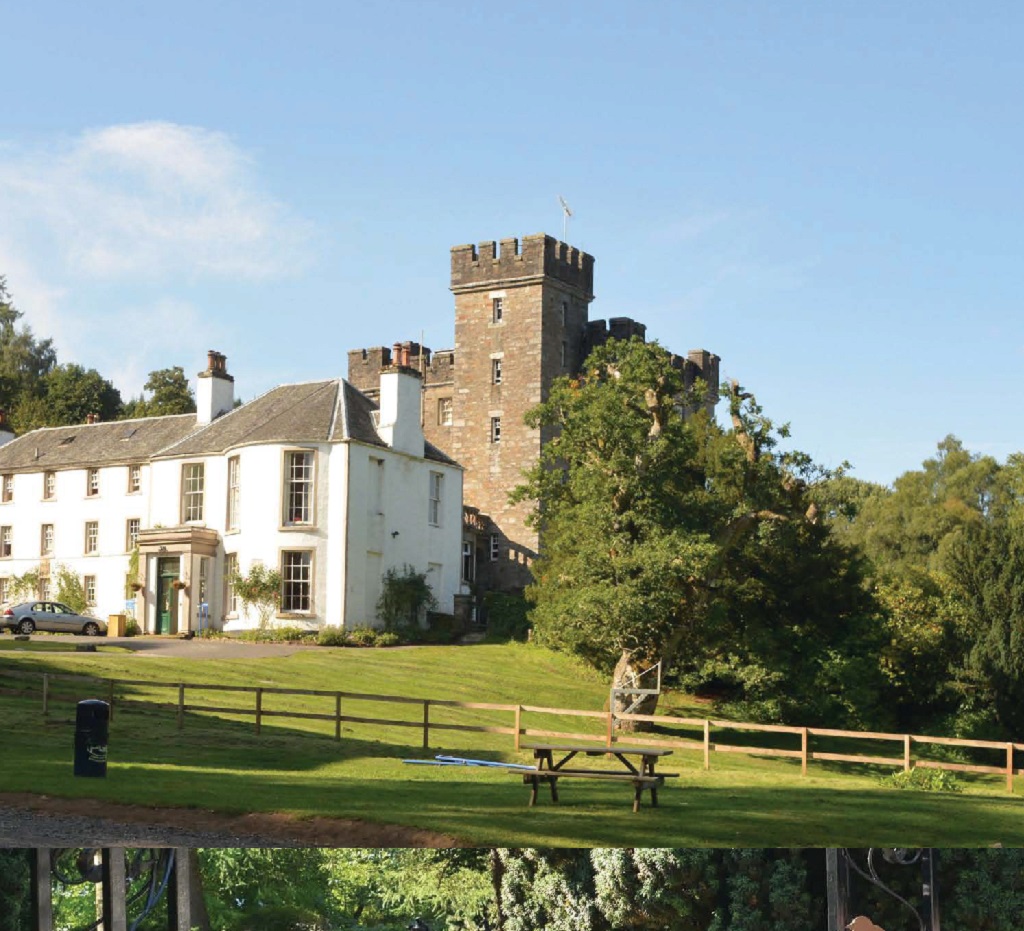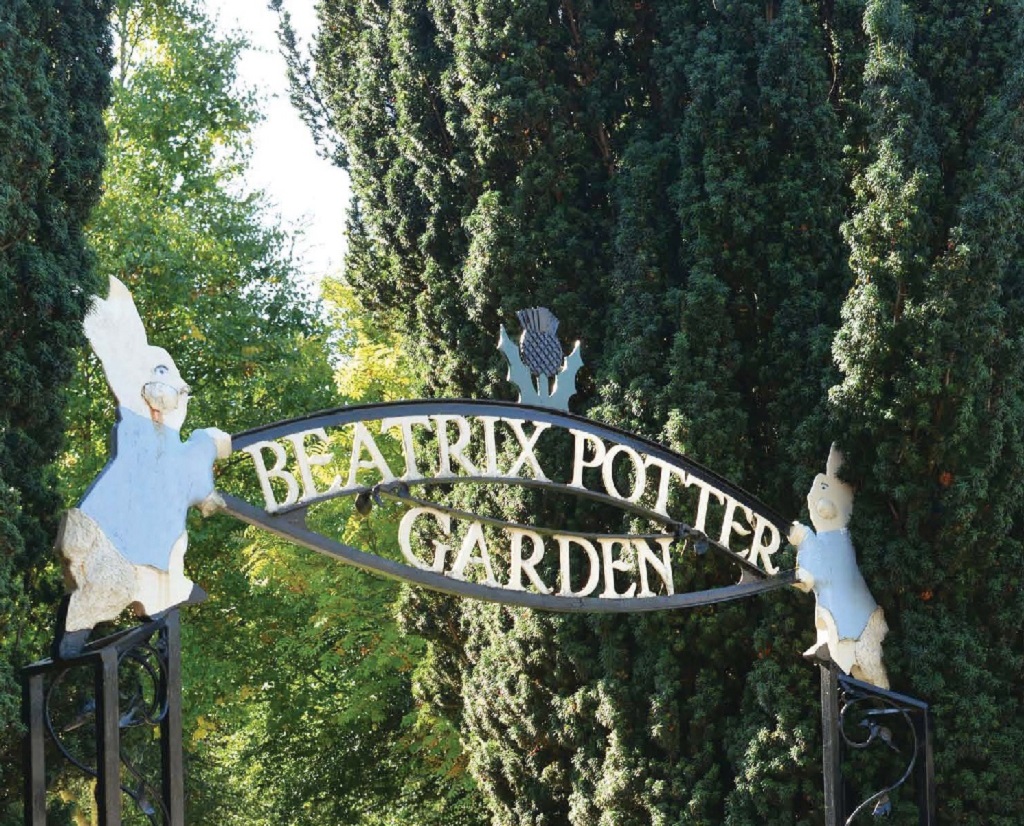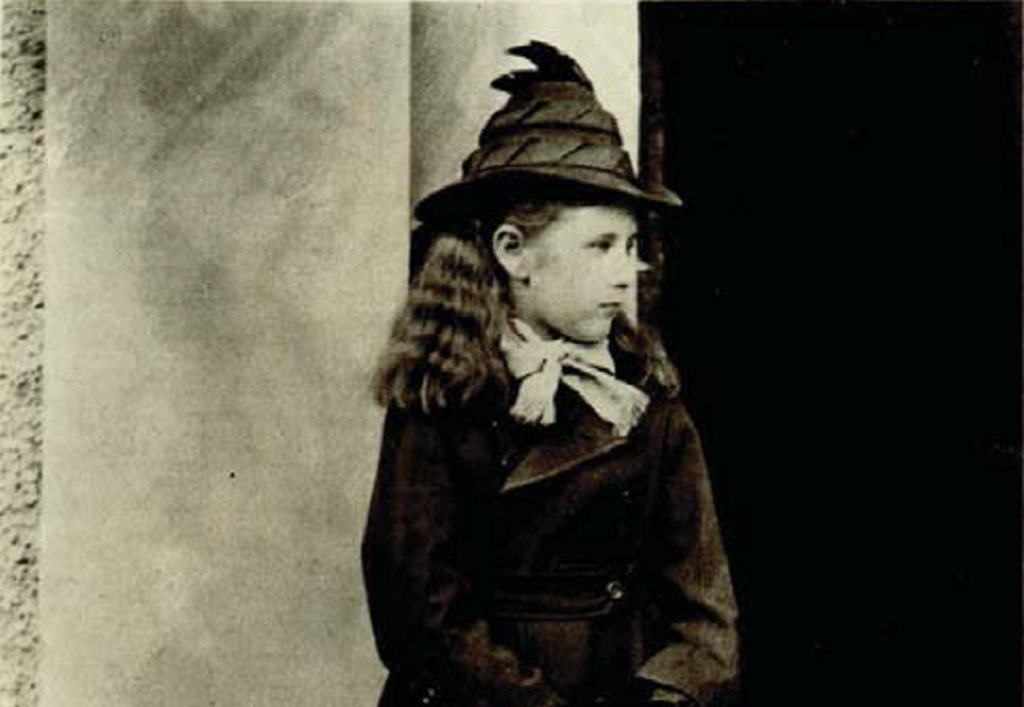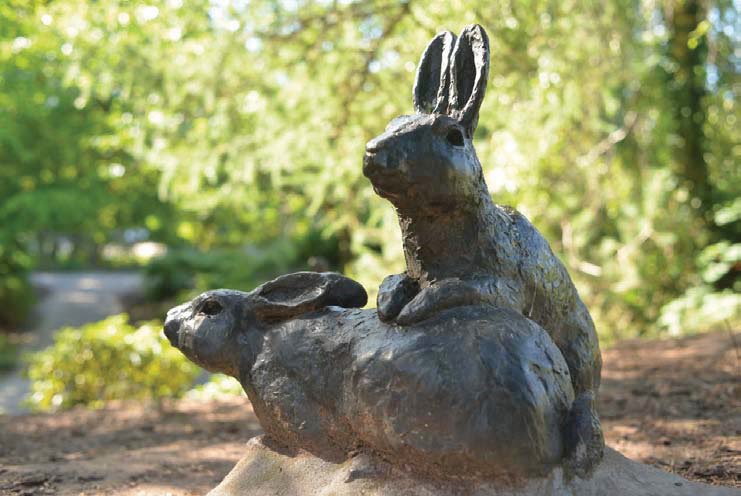
A celebration of Potter’s proud past in Perthshire
World famous children’s author Beatrix Potter is perhaps more associated with England’s Lake District than the wilderness of Scotland.
But it was a string of holidays spent in Perthshire that helped to shape some of the best loved tales she was to create.
During the 1890s, the Potter family spent their summers at Dalguise House, nestled on the banks of the River Tay eight miles north of Dunkeld.
And it was here, observing the nearby animals, countryside and people, that Beatrix Potter’s imagination spawned the adventurous Peter Rabbit, unsuccessful angler Mr Jeremy Fisher and the washerwoman hedgehog Mrs Tiggy Winkle.
During the late summer of 1893, Beatrix Potter was on her usual family trip to Dalguise House when she penned two letters on consecutive days that laid the foundation for a couple of literary legends.

Dalguise House in Perthshire
On September 4th, Beatrix sat down at Dalguise and wrote to five-year-old Noel Moore, the eldest son of her former governess. It was a Victorian correspondence that would change children’s literature.
The letter contained a story about a cheeky rabbit called Peter, based on her own pet rabbit called Peter Piper, and there were also some drawings of his adventures. The rest, as they say, is literary history.
But the very next day after sending the Peter Rabbit picture letter to Noel, Beatrix did it all again. This time, on September 5th, the letter was addressed to young Eric Moore, Noel’s brother, and the story enclosed was influenced by days spent by the River Tay. The character in question was one Mr Jeremy Fisher.
Fortunately for generations of children around the world, these two letters and others sent by Beatrix from Perthshire were kept in good condition by the Moore children. So when their mother, Annie, suggested they were good enough to be made into books, Beatrix was able to have another look at them and take her first steps into the world of publishing tales for children.
In 1900, enthusiastically embracing the idea of being an author, the Scottish Peter Rabbit letter was adapted. Beatrix took the original story and made it longer, slowed down the narrative and added more suspense, along with more illustrations.
At first publishers didn’t warm to her bunny story, so she arranged for a private print run of 250 copies. But after adding colour illustrations and being boosted by a surge in the market for children’s small books, Frederick Warne & Co. took on the project and by 1903 there were over 56,000 copies in print.

Birnam Arts Centre’s exhibition is a permanent reminder of Perthshire’s links to Potter.
Ten years after the adventure was dreamt up in Dunkeld, the success of the story was overwhelming and there was a hunger for more among her readership.
This year marks the 76th anniversary of Beatrix Potter’s death and 120 years since the famous Peter Rabbit letter was posted from Dalguise. The story of Peter venturing off to pinch carrots has been translated into dozens of different languages, including Scottish Gaelic and a Lowland Scotland version put together by Potter enthusiast Lynne McGeachie.
Beatrix first arrived on holiday in Perthshire when she was just four-years-old and continued to come regularly until she was 30.
But it wasn’t just the surrounding countryside at Dalguise and Dunkeld which had an influence during her early years. Beatrix’s first nurse was a Scot, and like many wealthy Victorian families the Potters believed Scottish nurses to be the best there were.
Nurse Ann Mackenzie was from Inverness and when on holiday in Perthshire the two would walk around the countryside talking about local folklore. In Scotland, Nurse Mackenzie read many influential books to Beatrix, including Uncle Tom’s Cabin, The Pilgrim’s Progress and The Water-Babies, all of which were important in her formative years.
Another Scot in the Potters’ employment was washerwoman Kitty MacDonald, who looked after their clothes throughout the summer vacations. Her characteristics were transferred to the fussy and clean Mrs Tiggy Winkle, a hedgehog who took care of garments in the animal kingdom.
The Potters would often spend as long as three months of the year at Dalguise House, bringing their own carriage to transport all their belongings. Once the railway arrived in the area they even had their own siding built at the house to help transport their luggage.

Young Beatrix Potter
These affluent holidaymakers were not ones to spend a short amount of time in Scotland and disappear back south of the border; they became part of the community and were well known to many locals.
One such person who befriended young Beatrix was postman and heavily bearded keen amateur naturalist Charles McIntosh, who walked miles every day in the local country side and was noted for collecting and drawing plants and animals.
‘He was a massive influence on her because she and her brother started to collect animals, both live and dead ones, after spending time with him,’ said Dave Amos, exhibition manager at the Birnam Arts Centre.
‘They would dissect things to see how they worked. He was well recognised as being an important naturalist, even though he was an amateur, and there has to be a case for him being the inspiration for Mr McGregor in The Peter Rabbit story.’
The Birnam Arts Centre now holds a permanent exhibition about Beatrix Potter and her time spent in Perthshire. Children can enter the world of Peter Rabbit and Jeremy Fisher, while the adults can gaze on the historic illustrations made by Charles McIntosh. It’s a celebration of all the links between this region of Scotland and the part it played in shaping the creative mind of a young genius.
Back in Potter’s day, the building played host to a library where she would borrow books – her signature can be found in records still held there.

A Peter Rabbit sculpture at Birnam.
Libby Joy is chairman of The Beatrix Potter Society and says that it’s often difficult to be precise about the influence which Perthshire had on the Peter Rabbit series of books because even if the stories were based on letters penned in Scotland they were actually written in their final form several years later. But Joy is sure that the region had a profound impact on Potter’s creative talents.
‘During Beatrix Potter’s childhood nearly all summer holidays were spent in Scotland, at Dalguise in Perthshire,’ she said. ‘The formative influence of these months is very important, particularly in connection with her love of the countryside and natural history, but also in connection with her fascination with fairy tales, legends and history. In early adulthood these Scottish holidays were interspersed with trips elsewhere, increasingly in the Lake District, but Perthshire continued to be a favourite destination.’
Landscapes change, of course, as do reading tastes. But some things manage to endure. It is still possible to see the astonishing beauty of Dunkeld and enjoy images similar to those Beatrix Potter once gazed upon. And children can still detect the timeless charm of a naughty bunny, some 120 years after his adventures were first written down in a letter sent from Perthshire.
TAGS

